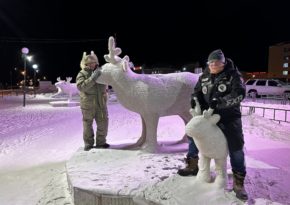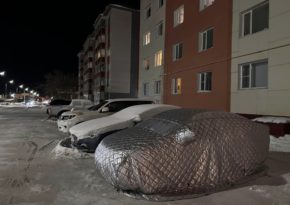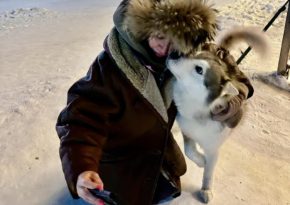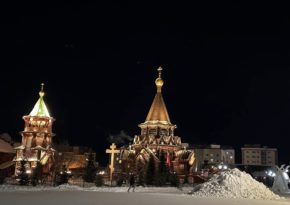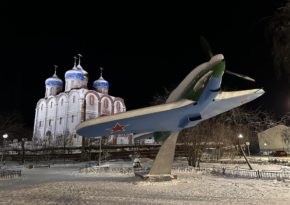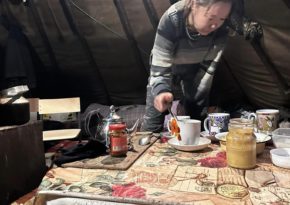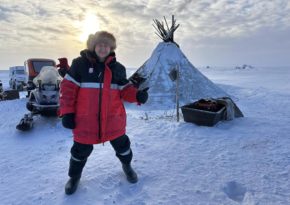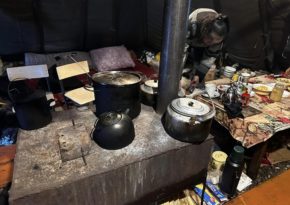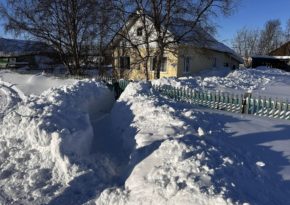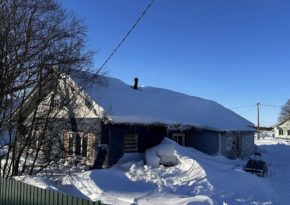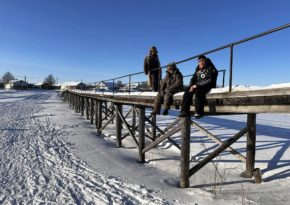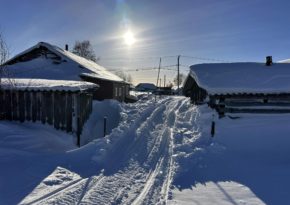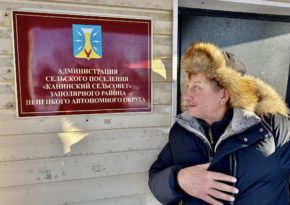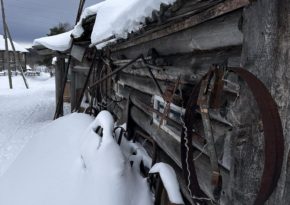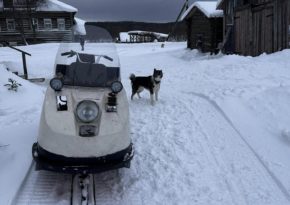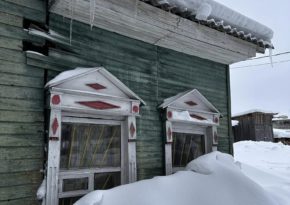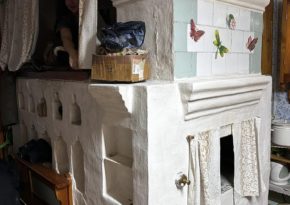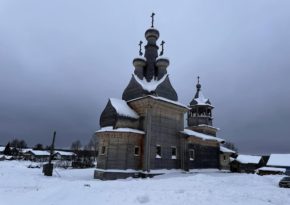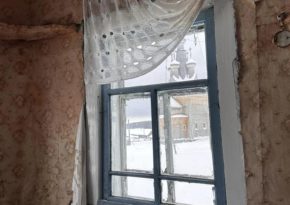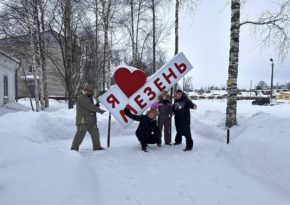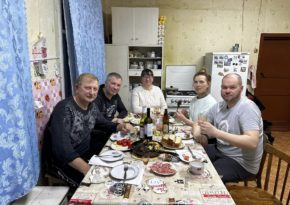Naryan-Mar, my Naryan-Mar
"Naryan-Mar, my Naryan-Mar —
Ain't close, ain't far…"
This is from a popular song of the 70s.
People travel back and forth and we’re going to the North!
It's time for one more journey to the Far North across our vast Homeland. Such kind of trips has already become a tradition for us.
It took us less than three hours of flight before we got to Naryan-Mar, the capital of the Nenets Autonomous Okrug.
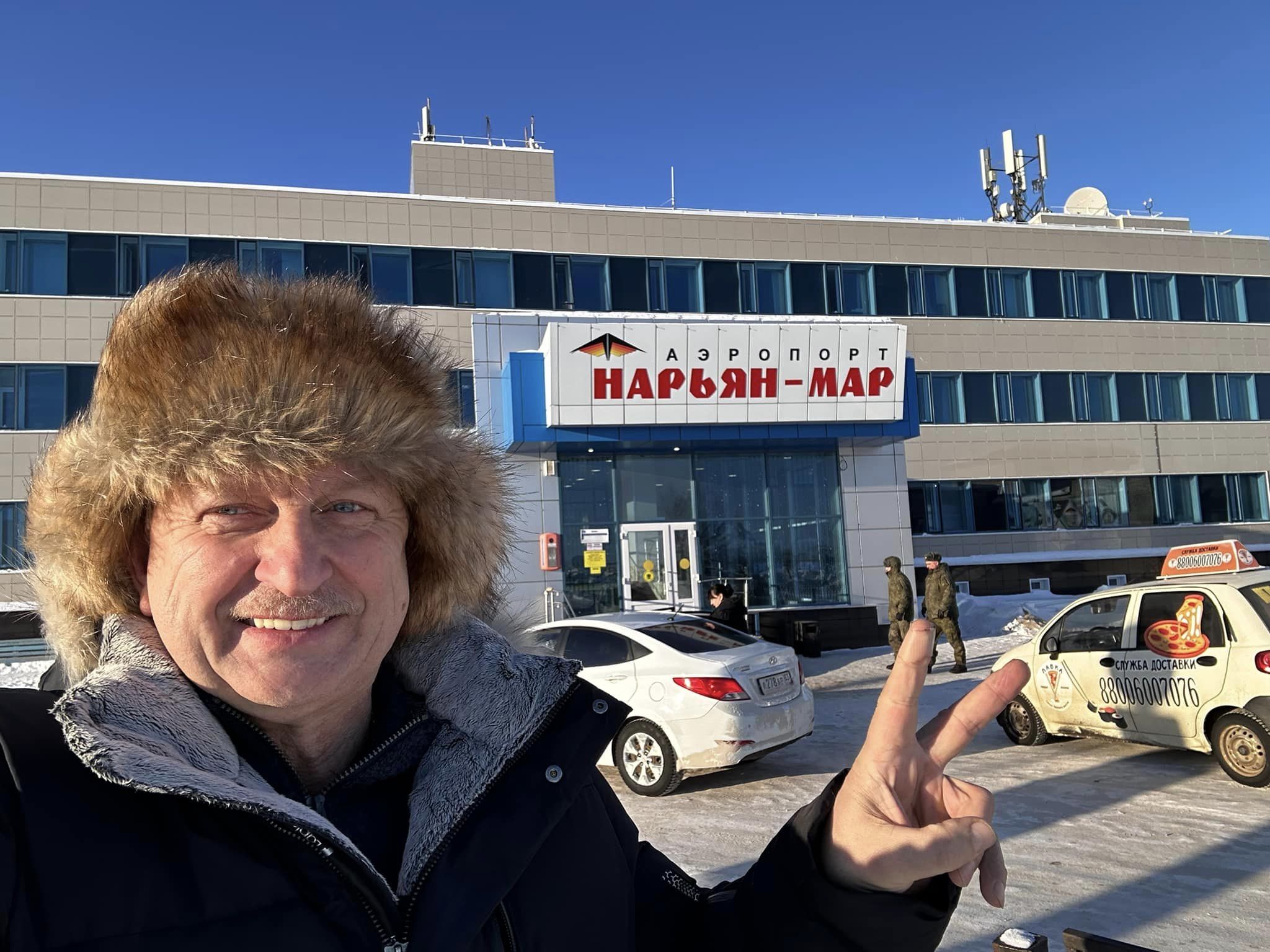
We were lucky with the weather, since the temperature rose up to –25°C and the day before it had been about –35°C. But the wind was still freezing so it felt like our faces were hardened.
Naryan-Mar is quite a small and compact town situated beyond the Arctic circle. It was founded relatively not long ago, in 1935.
It took us a couple of hours to explore the whole town up and down, following the tidy illuminated streets, have lunch in a cozy restaurant with fine local cuisine and hang out with local motorbikers in the evening. Yes, there are motorbikers beyond the Arctic circle! May this news come as no surprise to you.
Tomorrow we're gonna have a real adventure. Early in the morning we will take our snowmobiles and proceed our way further north up to the point where the Barents Sea connects with the Pechora Sea.
I hope the weather stays nice.
Tobseda
Today has turned out to be a very difficult day for us. We got up at 5 a.m., had a small breakfast and at 6.30 a.m. we left Naryan-Mar, going by three snowmobiles. One of them dragged a kind of house on skis with a trailer. It was a small plastic cart for two equipped with a Webasto heater and other modest amenities.
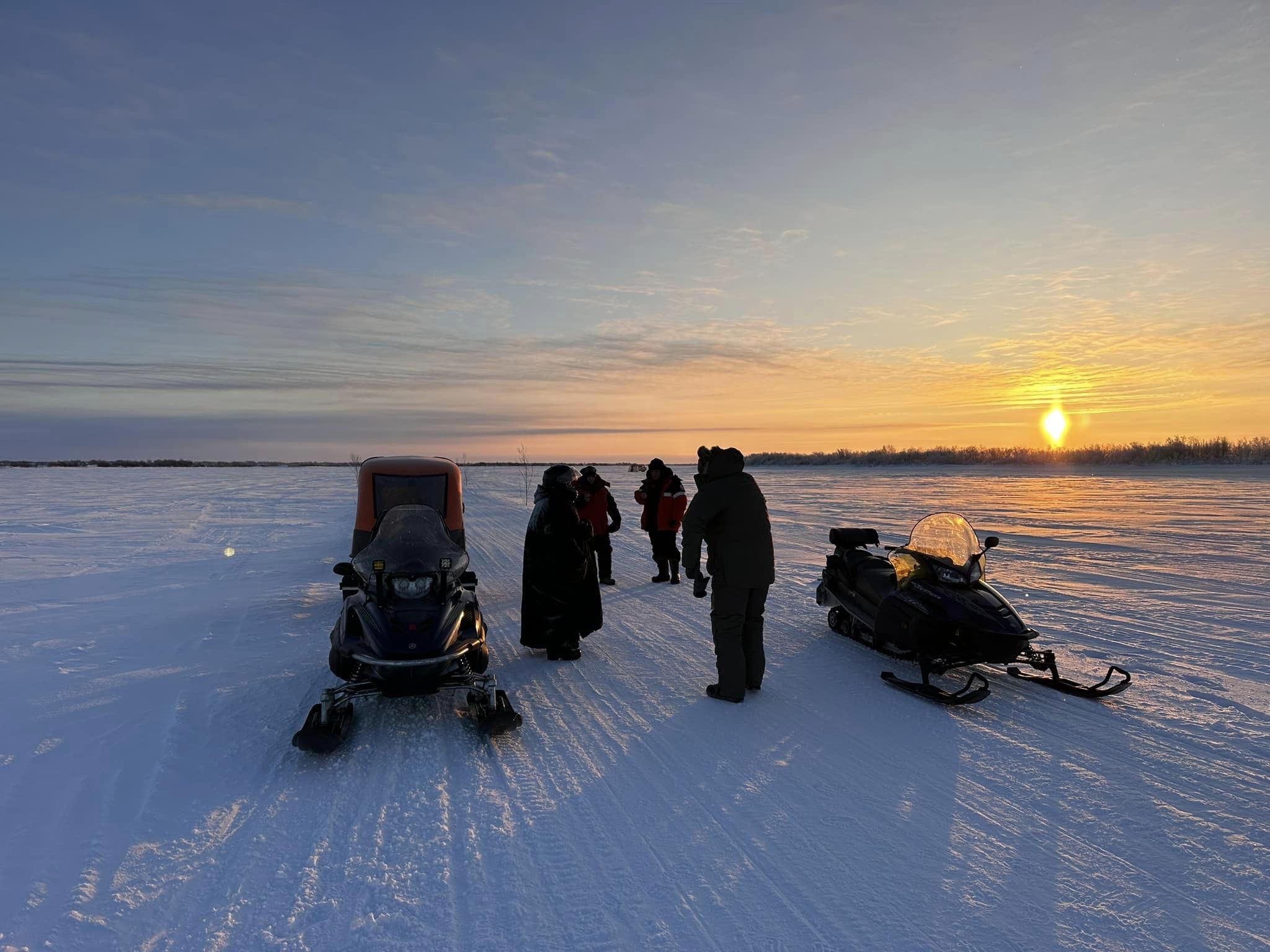
Having covered 50 km along the frozen riverbeds and lakes, which were covered with snow, we made a stop in a small village called Nelmin-Nos.
Then a passable road ended and we got into an endless tundra area. The weather turned bad, a strong piercing wind started blowing and we could see the path only 20 m straight ahead. Everyone who has ever traveled across the tundra knows how dangerous moving forward in a blizzard can be.
Overcoming rocks, snow-covered ravines and small riverbeds was a real extreme! The last 175 km distance up to the final destination — the former settlement of Tobseda (68.588481, 52.302659), which is situated on the coast of the Barents Sea – challenged us a lot in such weather conditions. A disastrous crosswind was scorching our faces, getting under our clothes, snow was blinding glasses and visors on helmets, therefore we had to slow down and keep on 20…30 km/h. At the point of 140 km behind we stopped at the plague of a reindeer herder whose name was Nikolai.
This is an island of life and warmth in the middle of a snowy and icy ocean.
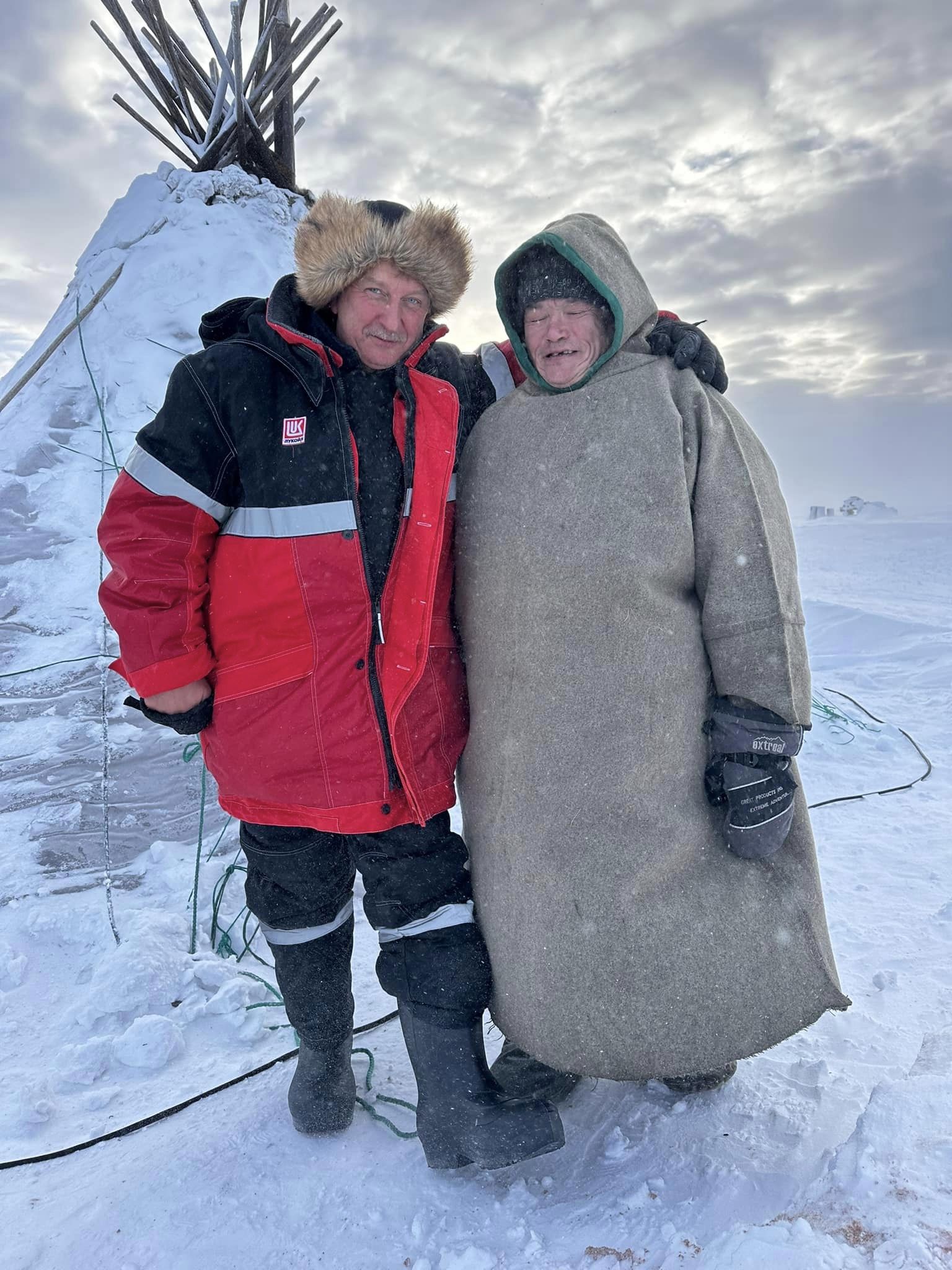
And then we had venison steaks fried directly on a small stove, stroganina, rich soup and moonshine infused with berries for lunch.
A herd of deer (more than a thousand heads) was grazing next to the yurt. There were also parked two snowmobiles and an all-terrain vehicle. A few dogs were running around. Nikolai is quite a wealthy man, so to say!
We reached the final destination of our trip – an abandoned and deserted village that was called Tobseda and located on the shore of the Barents Sea – in the late afternoon, when the line between heaven and earth blurred. We experienced a stormy wind, a blizzard and a vast white desert.
This is one more edge of the world that I have been lucky to visit.
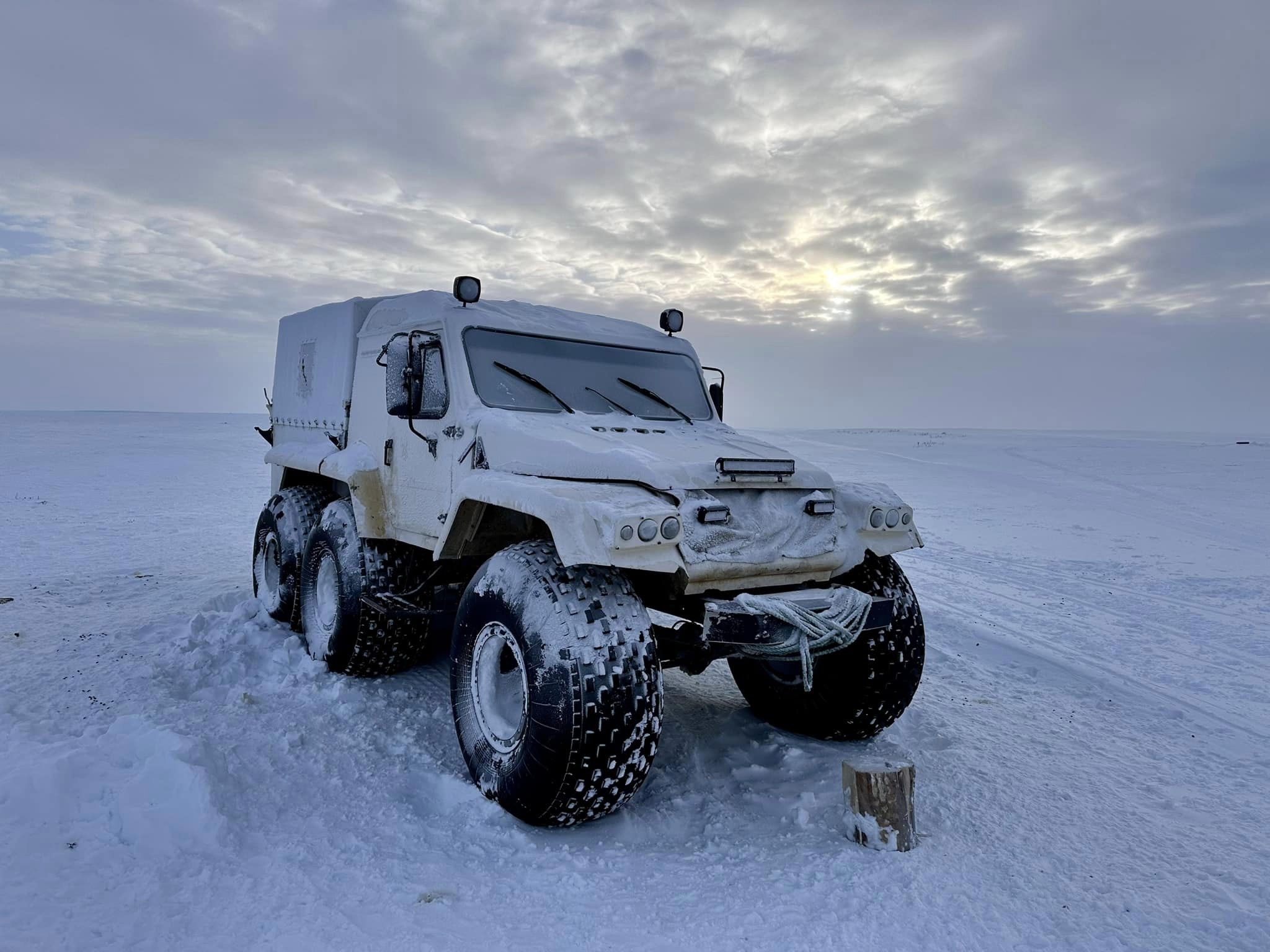
"I'll take you to the tundra..."
This is a line from a Russian song.
Until yesterday, the Beineu-Nukus highway from Kazakhstan to Uzbekistan held the top position in my personal rank of the most boring routes in the world.
But the 250 km distance across the tundra that we experienced going by a snowmobile is highly likely to compete for the victory.
Recently the Internet witnessed the popularity of a video, in which a few fat men were bathing in a huge tub of milk at some dairy plant. Actually, if they had put on masks and scuba diving equipment, inside the tub they would have seen the same thing that we had been observing for several hours, moving across the tundra in a blizzard.
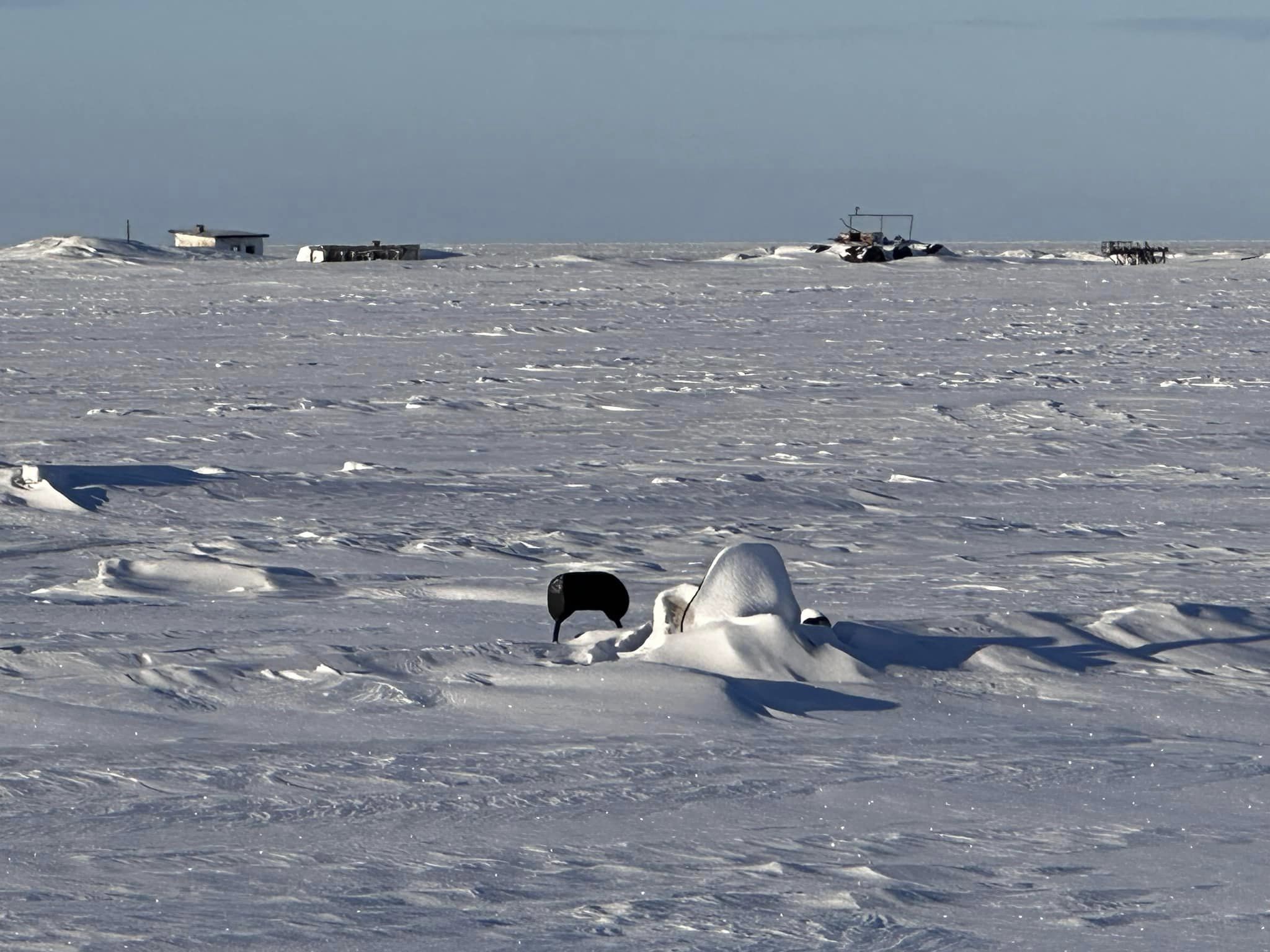
We could see no sun, no shadows, no horizon. Just an endless white space longing in all directions. And nothing else.
Like in a tub of milk.
Nevertheless, the first 80 km from Tobseda to the Khodovarikha weather station were gorgeous! The blizzard that had been raging all night calmed down and the dazzling sun rolled out onto the pure and transparent blue sky, the snow was creaking loudly underfoot and the path to the northeast along the icy coast of the Barents Sea promised to be bright in all respects.
It took us two and a half hours to get to the weather station. It consisted of a few snow-covered houses, in one of which there lived meteorologists whose names were Dmitry and Nina.
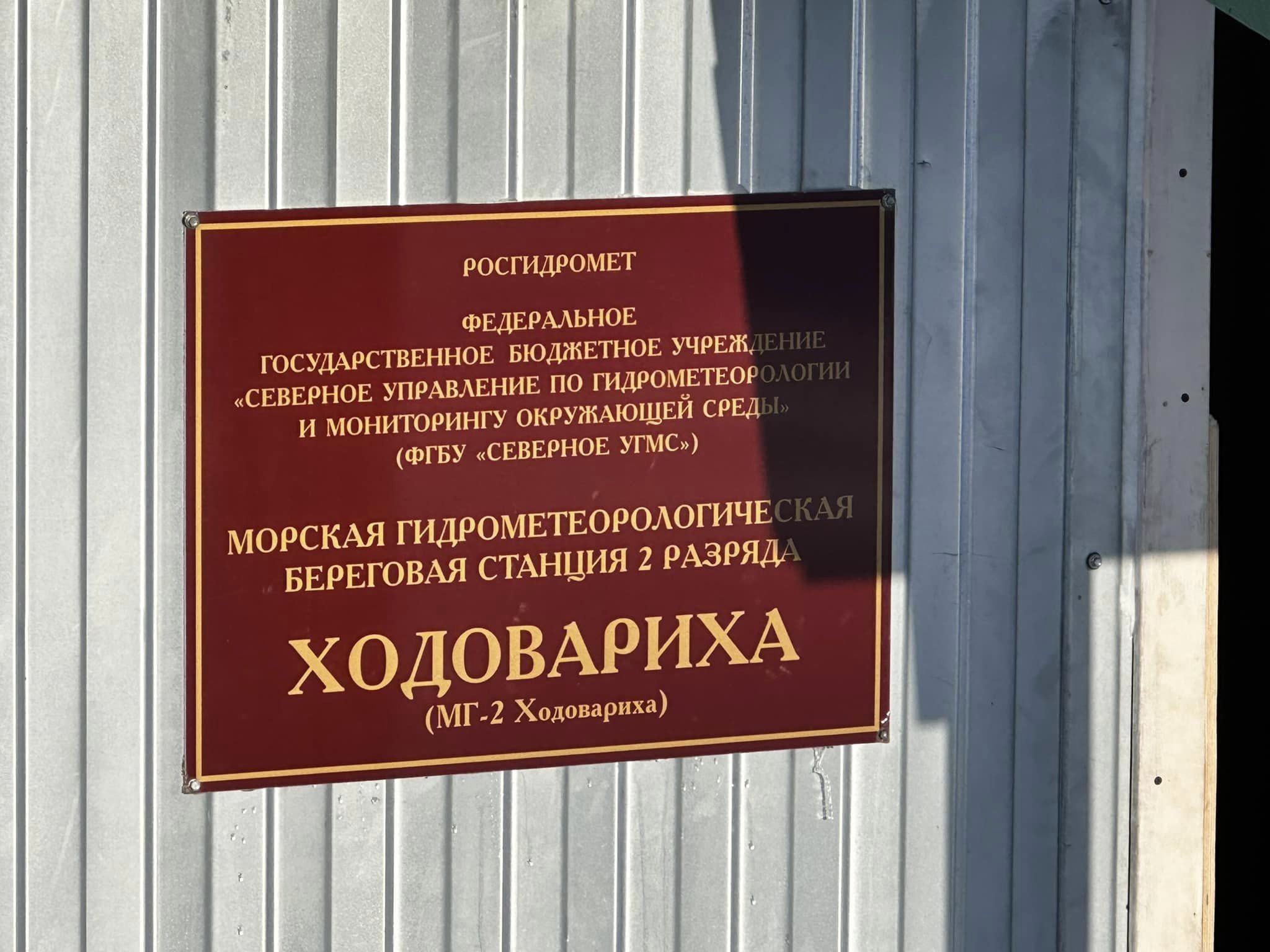
And a black mongrel dog lived with them.
And that's all. There is no living soul for hundreds of kilometers around. The shift lasts one year. Once a month or on an emergency call a helicopter brings food and other necessities. And maybe some hunters accidentally come to this God-forsaken holy… land. Actually, their work is a no-brainer: every three hours they must take recordings from the devices and transfer them to a higher data processing center.
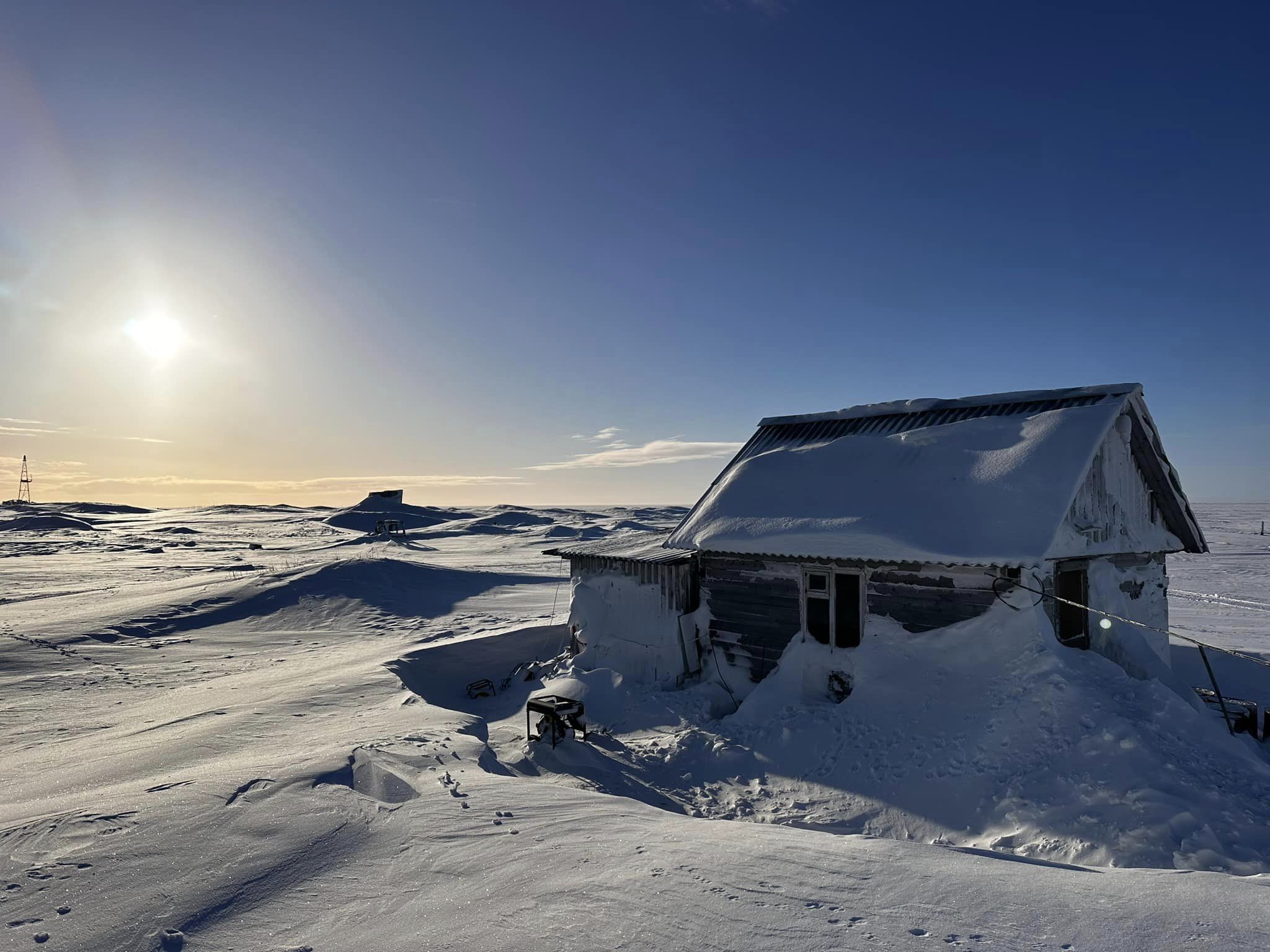
After a delicious lunch, for which we had some wonderful soup with venison and fresh fish, we said goodbye to the amiable hosts and left for the blue-white haze of the endless tundra.
The weather turned bad and seven hours of immersion into the upside down world of the vast Far North were waiting for us.
"And to this faraway land you can get by plane only."
This is a line from a Russian song.
"The departure of flight number 1099 Naryan-Mar — Nes is canceled due to bad weather."
We spent two hours waiting at the airport and then returned to the hotel.
The proverb "If you want to make God laugh, tell him about your plans" seems especially relevant, when you are in the north. The weather here is unpredictable. Though it may be sunny and frosty in the morning, you can still experience snowfall and blizzard in the afternoon.
The next day at 6 a.m. we got back to the airport and finally we were lucky. The MI-8 helicopter was waiting for us on the runway.
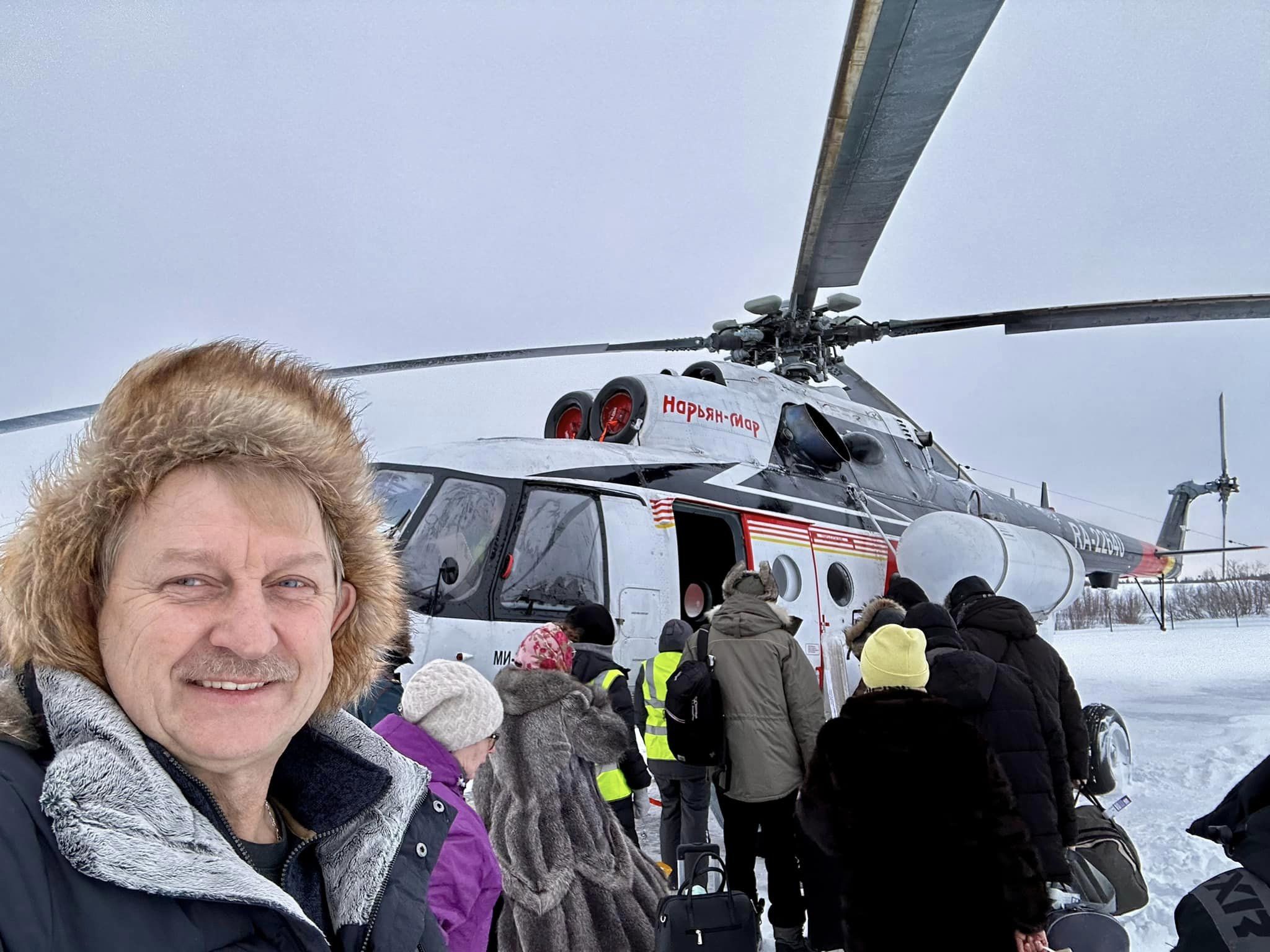
Having settled on the side seats and piled the aisle with various stuff — boxes, bags, frozen venison, spare parts and other tools – the passengers buried their faces in their phones.
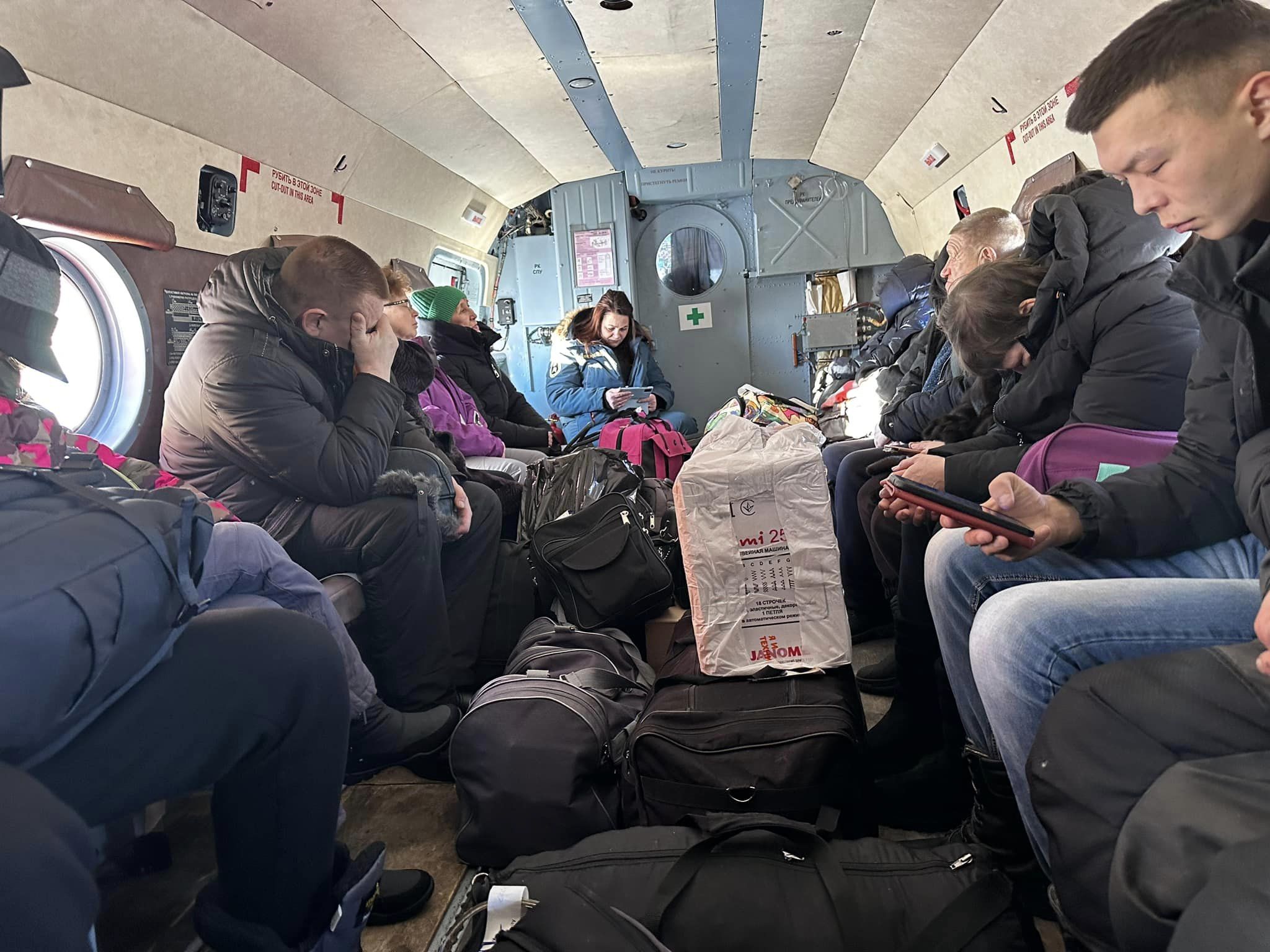
Then you would hear the increasing roar of the engine, see the blizzard going from the huge propellers and the helicopter would smoothly take off the ground. We are flying at an altitude of 200-600 m above the land and keeping a cruising speed of 160-180 km/h. In the porthole you would see an endless, lifeless tundra, winding frozen riverbeds, lakes and snow, snow, snow…
It took us 2.5 hours to get to the village of Nes, which is located on the bank of the river of the same name. (66.600875, 44.67874)
This is another dot on the map, where a normal person would never like to get even in his most delusional fantasies.
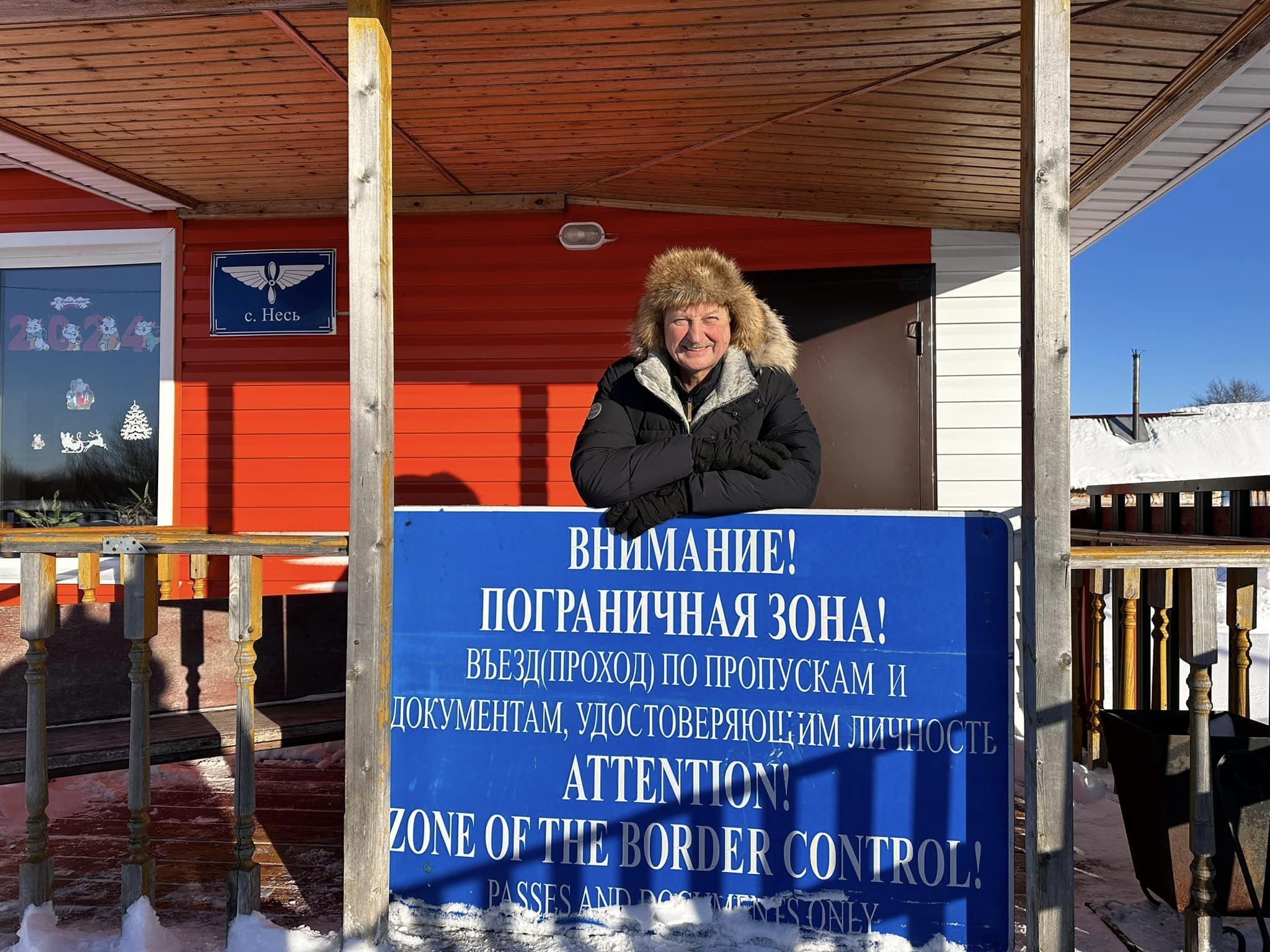
The paths of the Far North. Nes–Mezen.
The majority of the towns and villages in the far north do not have roads and it is almost impossible to reach them by land in summer.
But in winter it's not that sad. The zimniki (winter roads) are paved and then freeze. These are the roads that run right across the frozen swamps, rivers and lakes. Zimniki can be local, regional, federal and they may connect the nearest settlements and even regions. One of these snow paths, 100 km long, is laid south from the village called Nes to the small town Mezen. (65.843911, 44.243808)
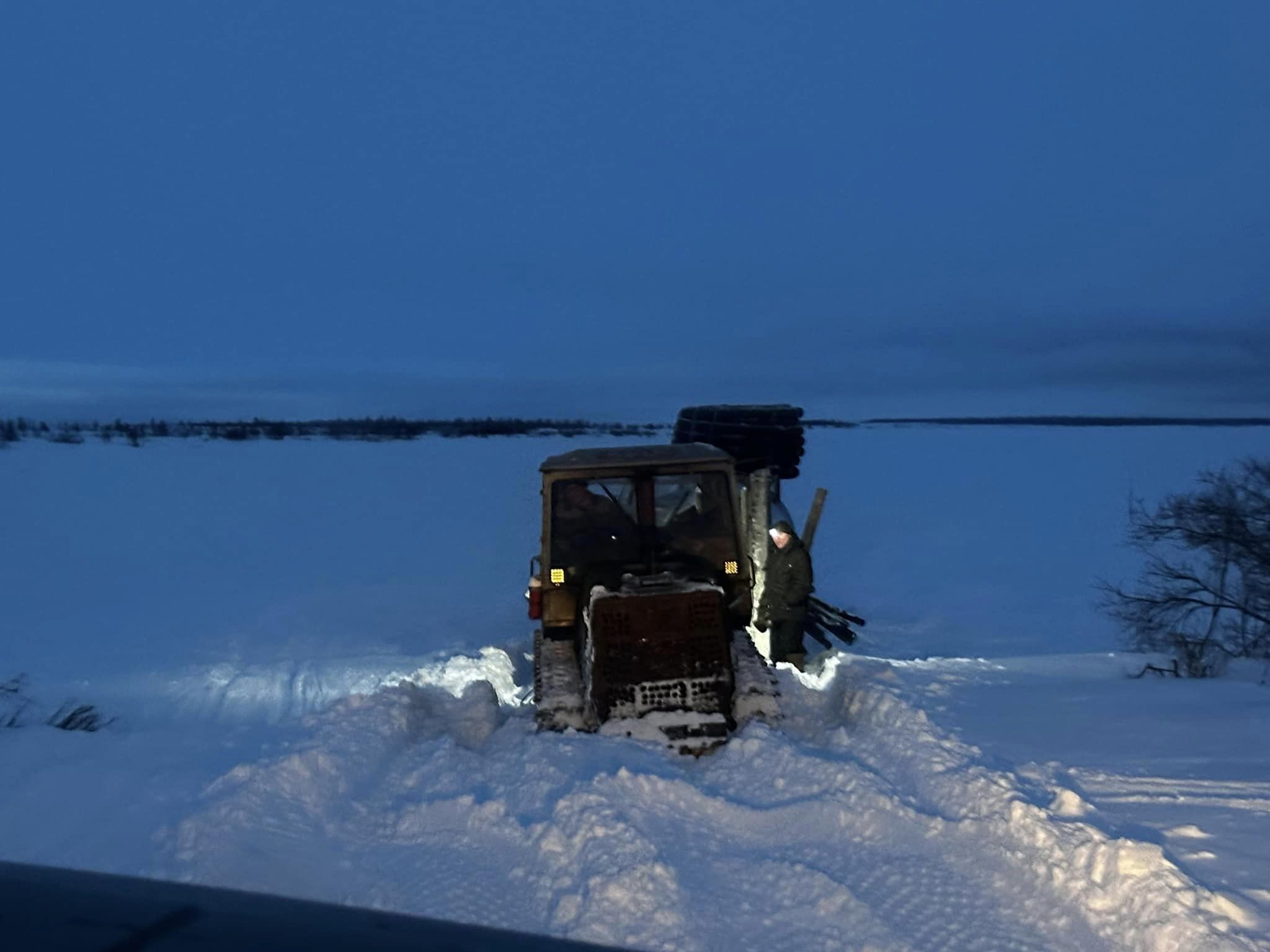
Following this path, we went on another adventure by the “UAZ-Hunter” all-terrain vehicle with huge wheels.
It took us one hour to cover the first 30 km distance. You can't really accelerate the speed in tundra. UAZ is winding from side to side and at some point it is abruptly thrown to the right from a rolled track. We heard a scratch, felt a bump and the car slid into the deep snow.
The end! We have to get out.
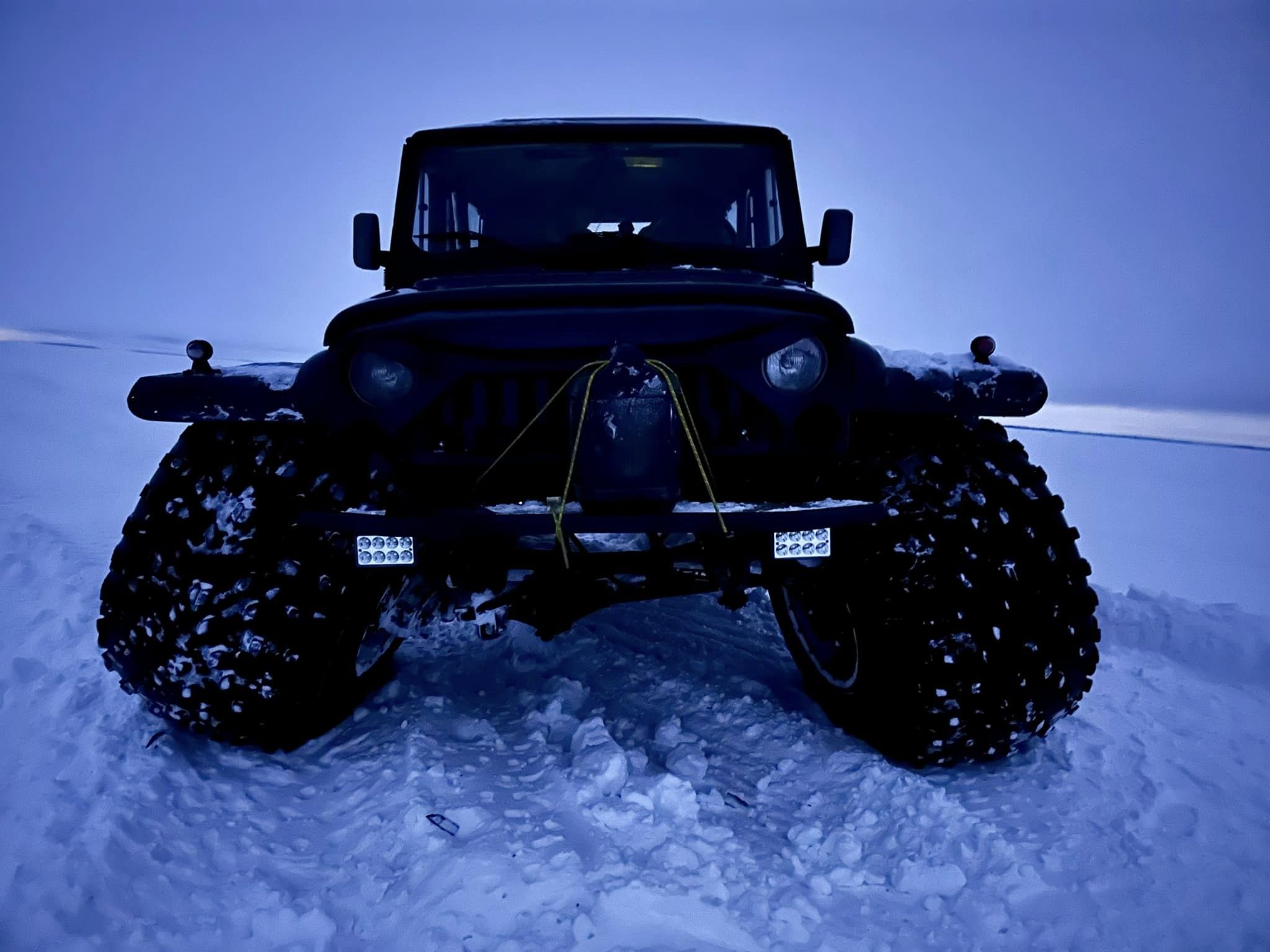
The wheels of the UAZ now look in different directions and the right steering knuckle has been completely torn out, therefore, it is impossible to go further.
Night. Tundra. No communication link. What shall we do?
But the driver is absolutely calm. It seems that this is quite an ordinary case for him.
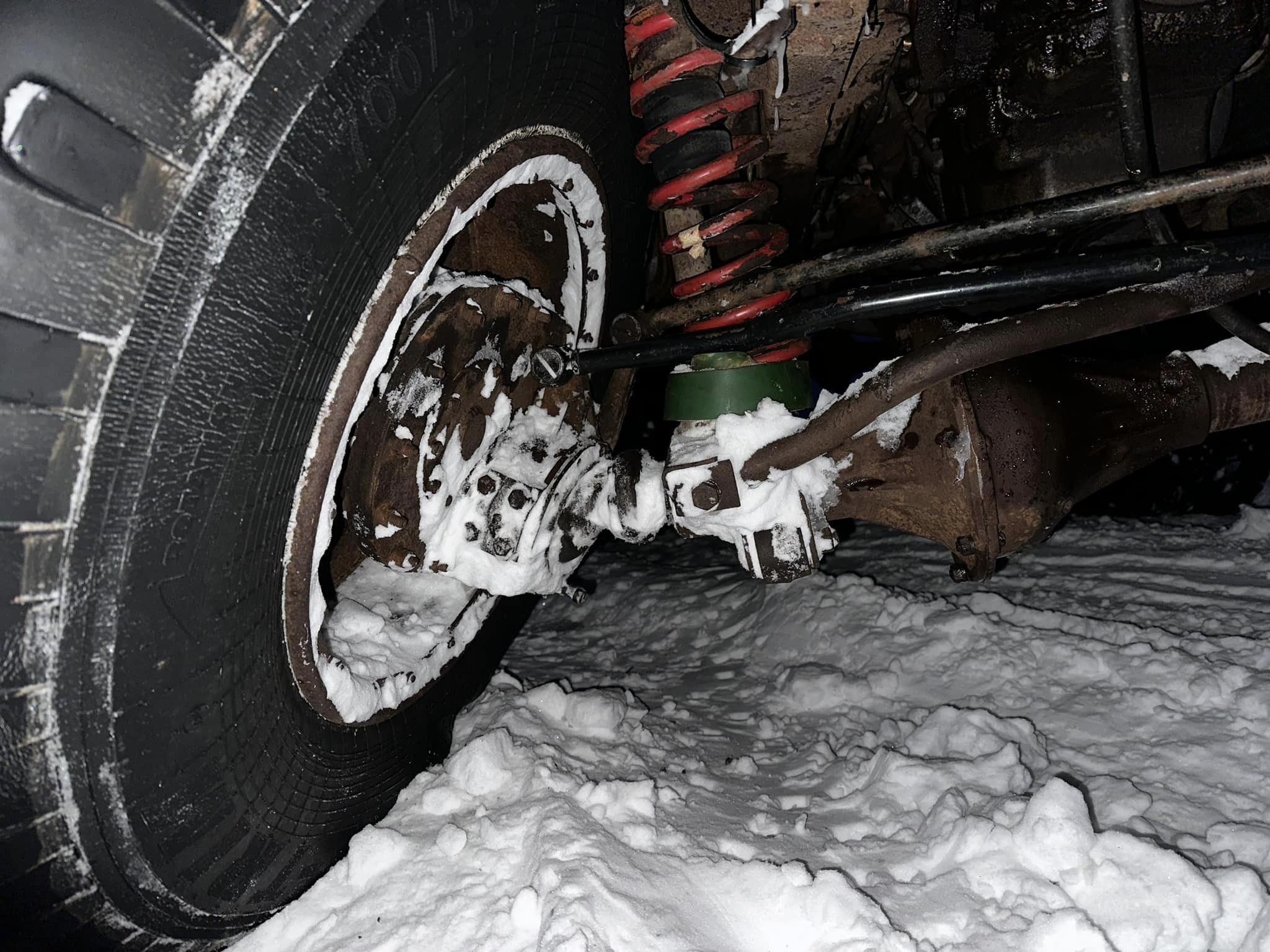
Asking us to stay in the car, the driver walked back down the road. He returned half an hour later and stated that he had caught the link and managed to call his friend, who would come for us by a more sophisticated three-axle all-terrain vehicle named Trekol.
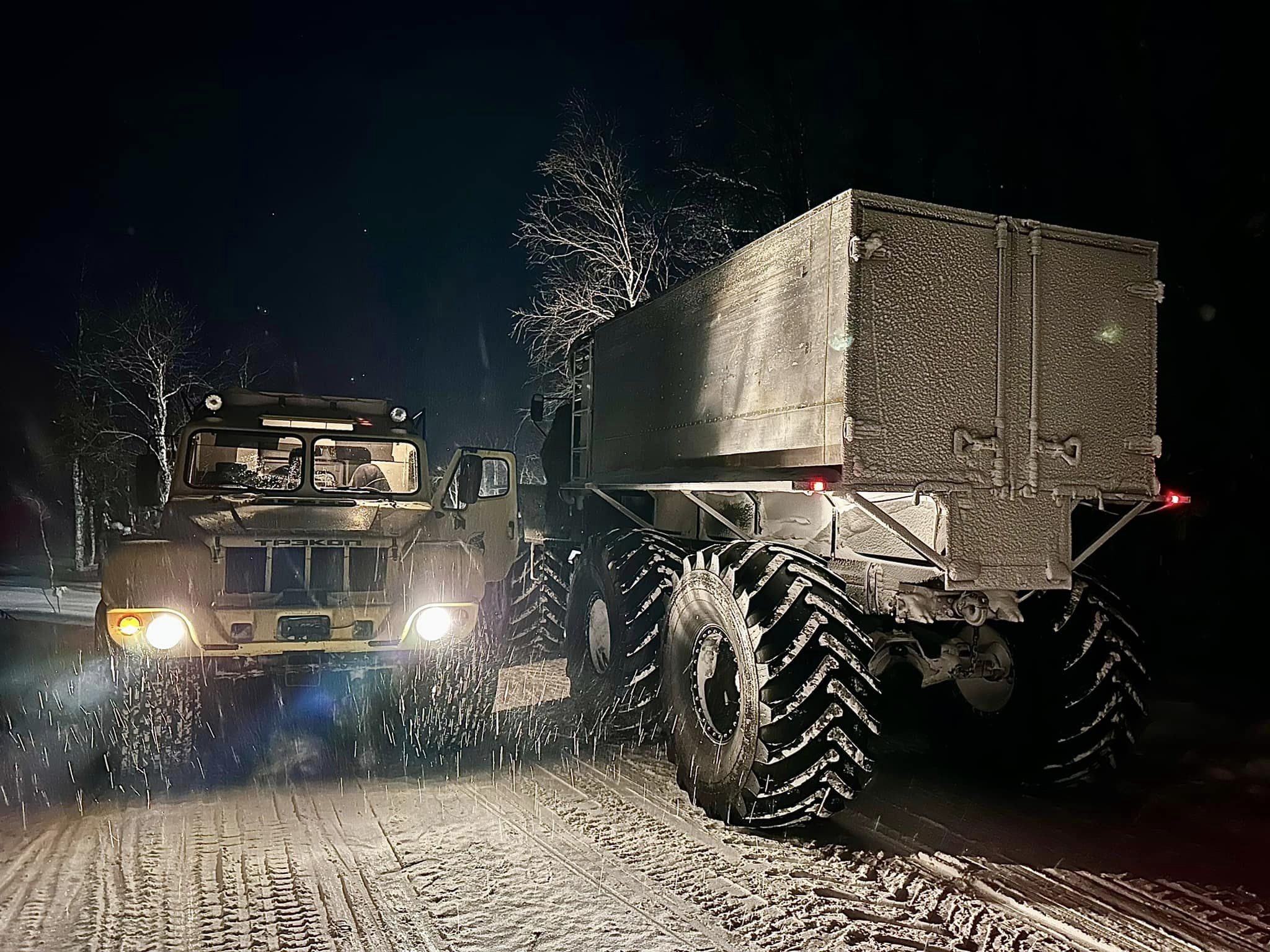
After 1.5 hour in a suspense, finally the headlights have appeared in the darkness of the night. After transferring the stuff, we continued our way to Mezen together with the first driver.
It seems that we've met everyone that night!
We saw a stuck tractor, which was pulling a trailer with a large tank of fuel, then a huge URAL, a group of snowmobiles with sledges and even a weirdo from Moscow going by a Renault passenger car, shod with tracks instead of wheels. He also had a serious problem with the suspension and could not continue his way.
Unfortunately, we couldn't be of any help for him.
By midnight, being absolutely exhausted because of the road and unexpected adventures, we have finally reached Mezen.
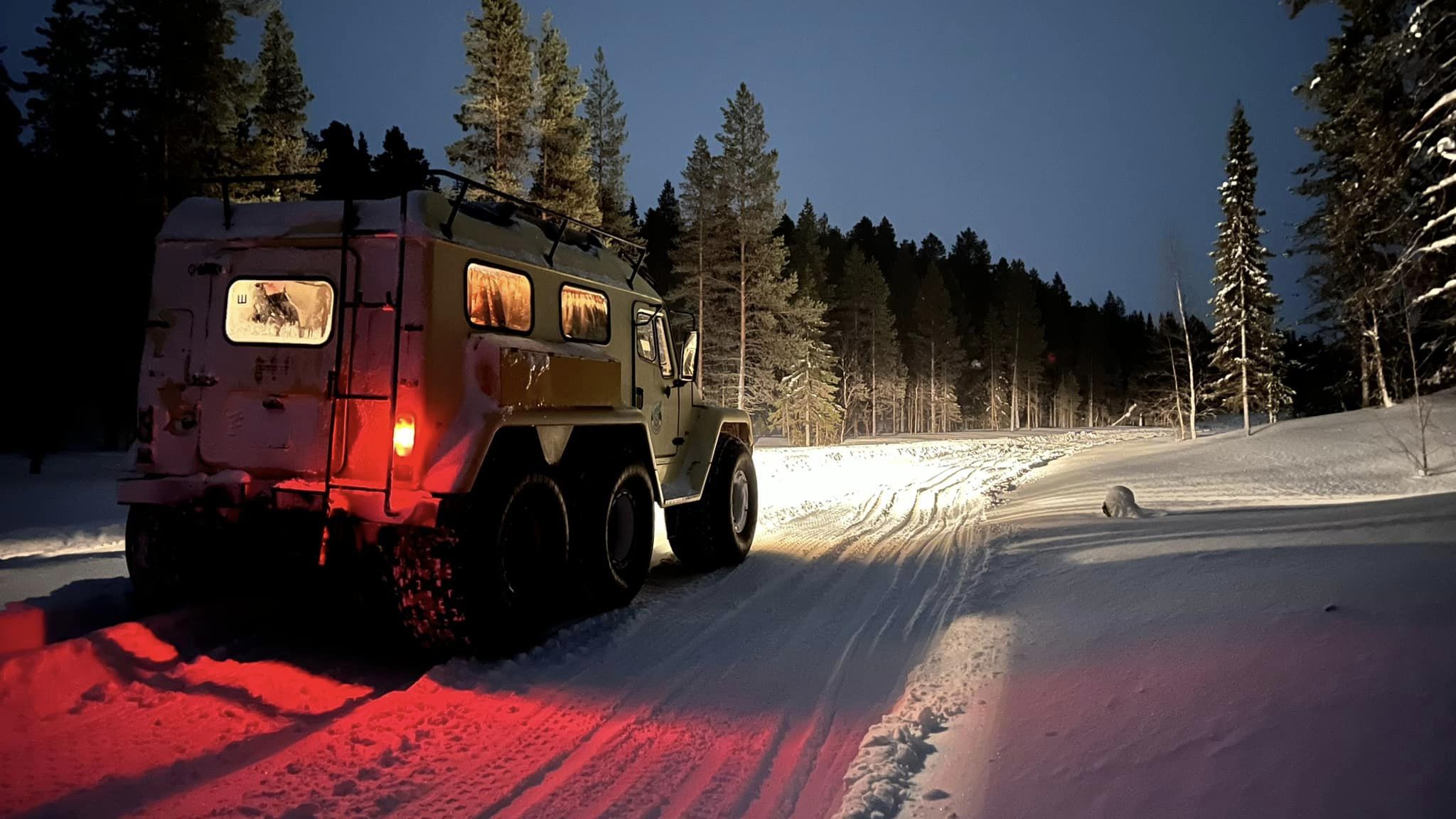
What can one do in the Far North in winter?
An average townee would twist his finger at the temple and, actually, he would be right. From the point of view of an average person, everything looks very sad in the Far North. There are no all-inclusive hotels, warm sea and you can't sunbathe there on the beach. Well, certainly, there is a sea (and even more than one), but it is slightly icy and there is also a snow-covered lifeless tundra, as well as strong winds and frosts. And actually you can lie on the beach, but not for long. Otherwise you may be snowed up.
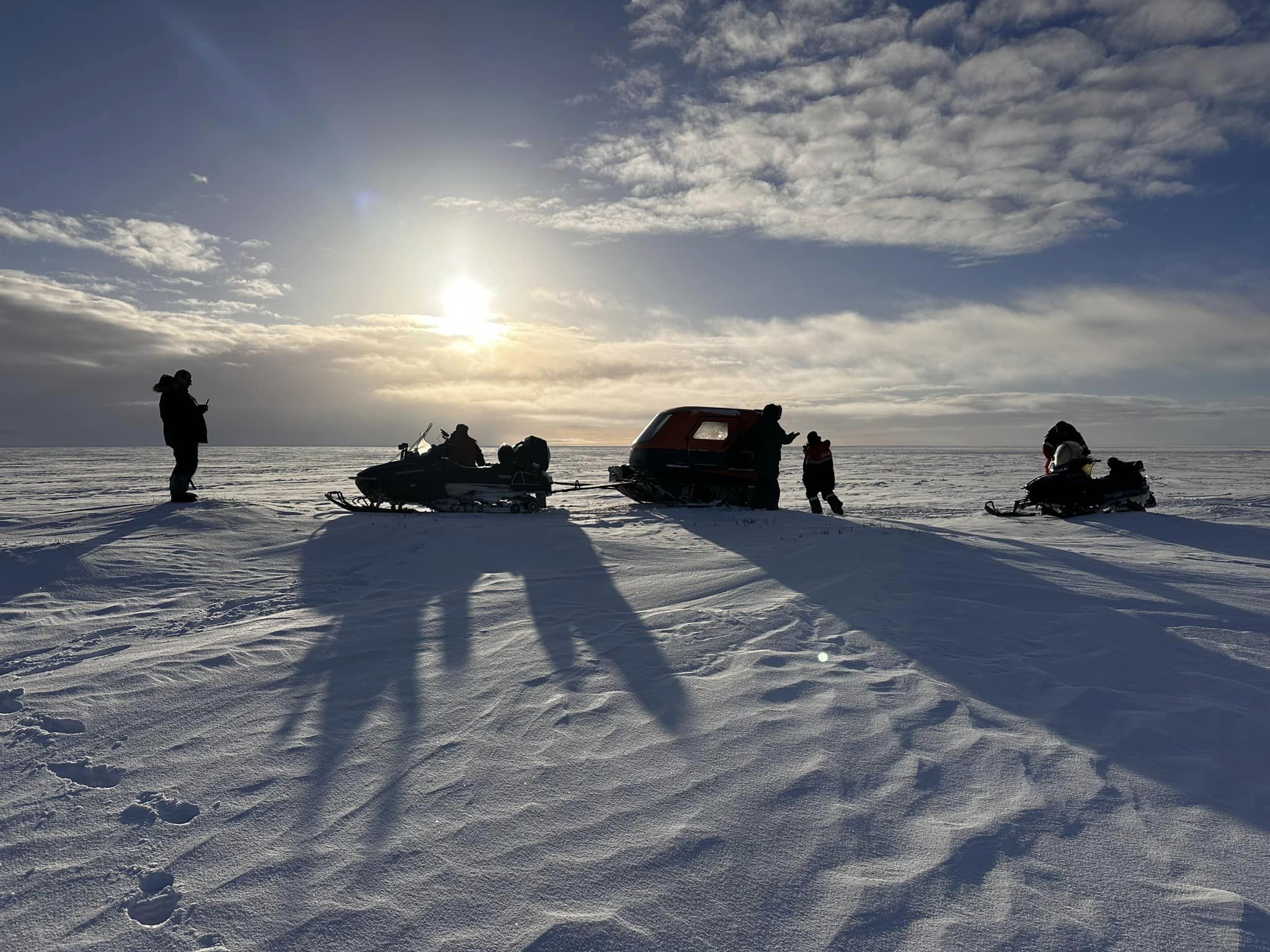
So, dear townee, I think, you had better stay off tundra. надо.
What for do you need these senseless snowmobile races across the sparkling expanses of the endless tundra?
What for do you need these herds of deer, these lunches in the herders' tents, when the amiable hosts just eager you to overeat that fresh venison and stroganina, and then to crawl out of their plague on your fours?
And remember these flights by AN-2 and MI-8 helicopters, which provide neither business class, nor economy one. In terms of comfort, they are closer to a cargo compartment of some small Boeing.
No use mentioning the condition of roads and motorways, because there are practically none of that kind here. And people have to go right across the frozen swamps by weird cars with huge wheels, which can also break down at night in the middle of nowhere. And you simply can't call a Yandex taxi or a tow truck. Can you imagine something like that?
What have you left in these Pomor villages with straight streets, windmills and huge century-old log houses covered with snow up to the very windows?
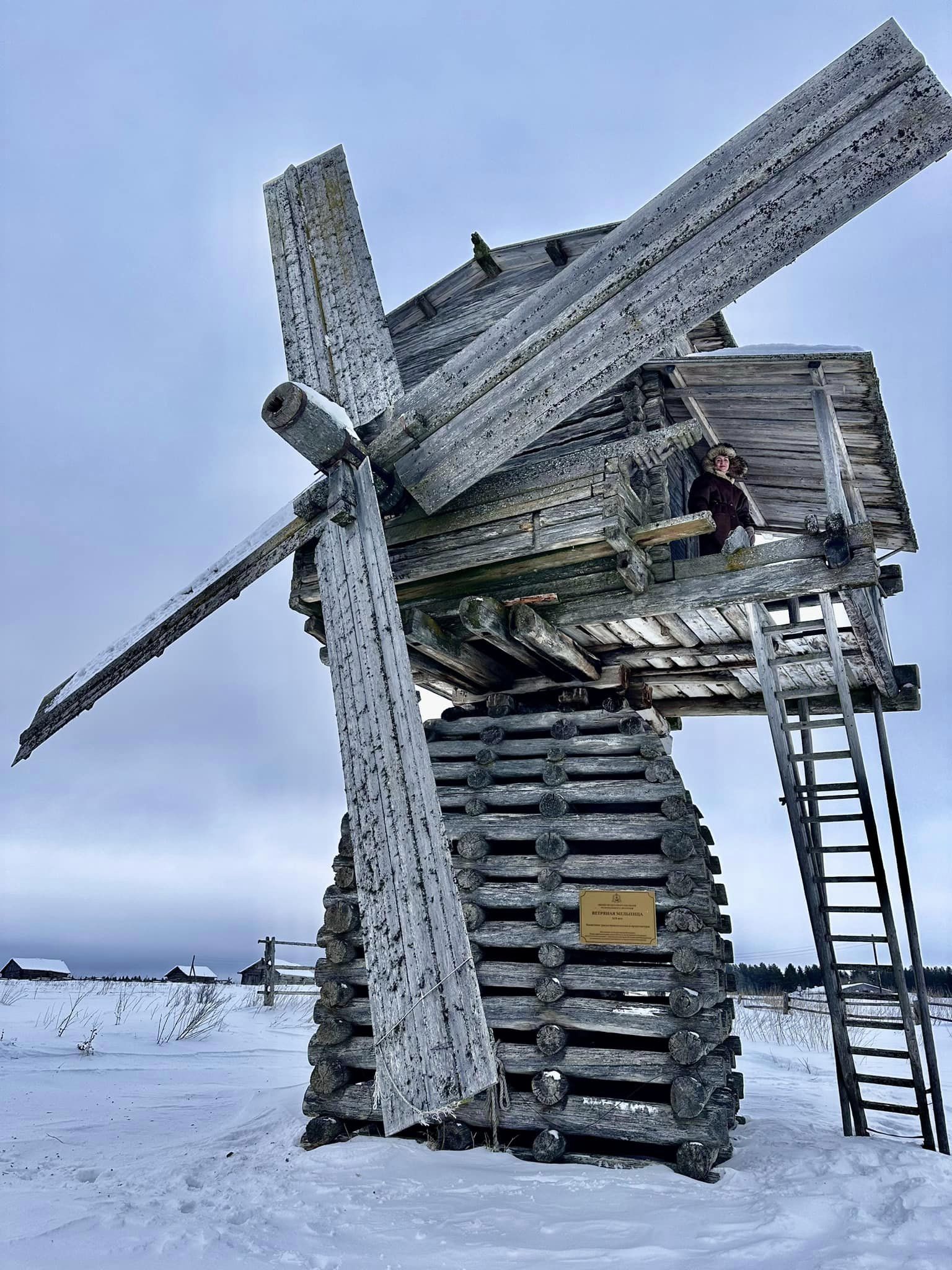
And, God forbid, you will have to stay overnight in one of these houses! You will be offered to sleep right on the Russian stove and in the morning the housewife granny Tanya, will forcibly make you finish yesterday's goose baked in the same stove with fried potatoes, taste salads from fresh cod, omul and fix your head with cloudberry liqueur. No Big Macs, Coca-Cola and other familiar food. What a horror!
And there are also no Jacuzzi and even no showers that you got used to. "Then how one washes?", you may ask in surprise.
You can take a bath only in a Russian sauna, heated in advance, including all those brooms, pushing on the heater and running naked into the street to fall face down into a huge snowdrift.
There is no shower, and that's it.
So you have to undergo scooping water from a barrel and pouring yourself down with a bucket.
Being absolutely desperate, of course, you can still bathe under the streams of a taiga waterfall, which gushes from icy rocks. One girl of our expedition team dared to do this, but you aren't like her, you're a normal person, aren't you?
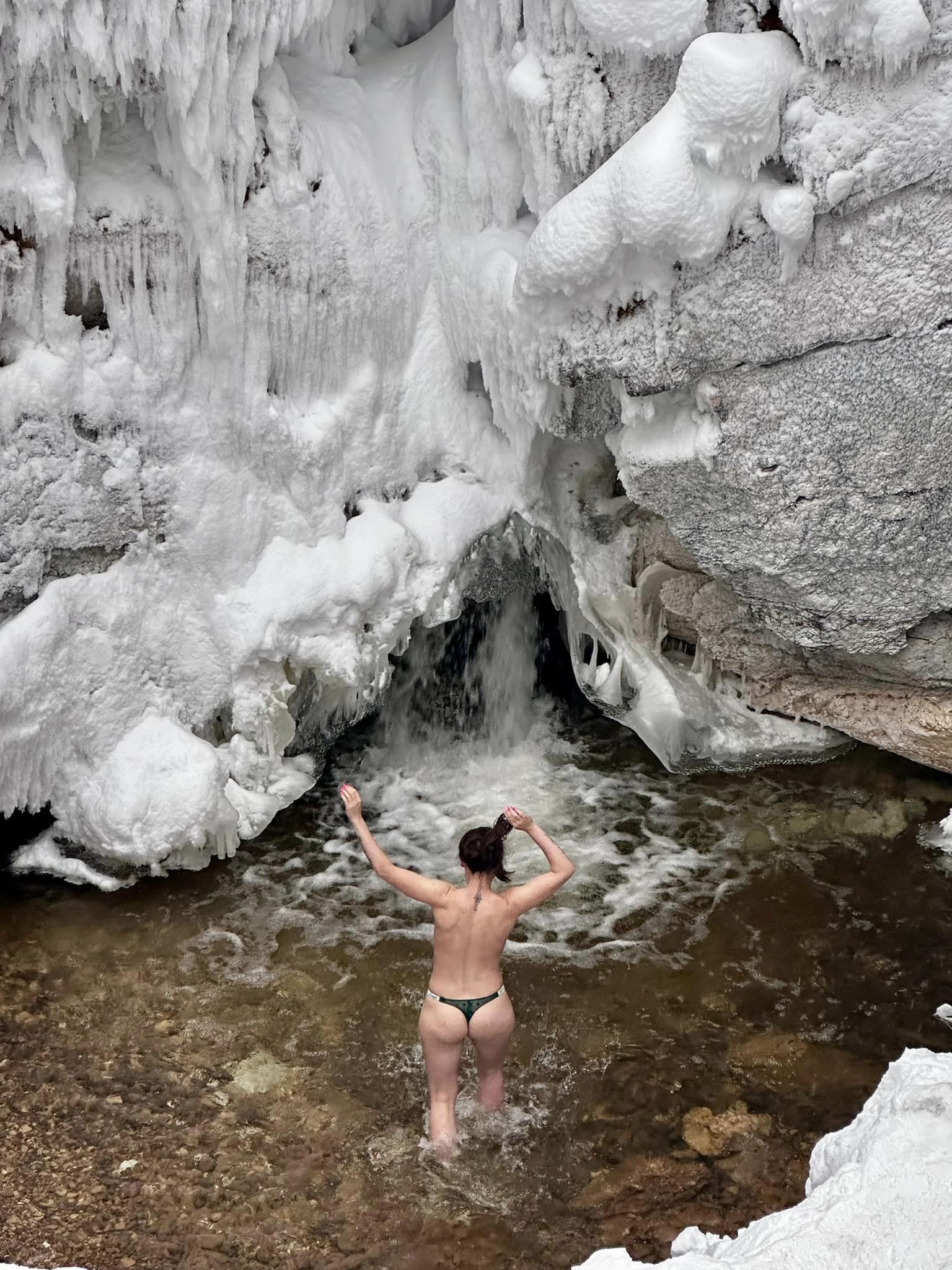
So, go on vacation, buy tickets from a big airline company and leave for the Maldives, Seychelles, Thailand or Egypt with a feeling of great satisfaction. At least, you will definitely relax there, like all normal people.
Instead of something extreme… :)
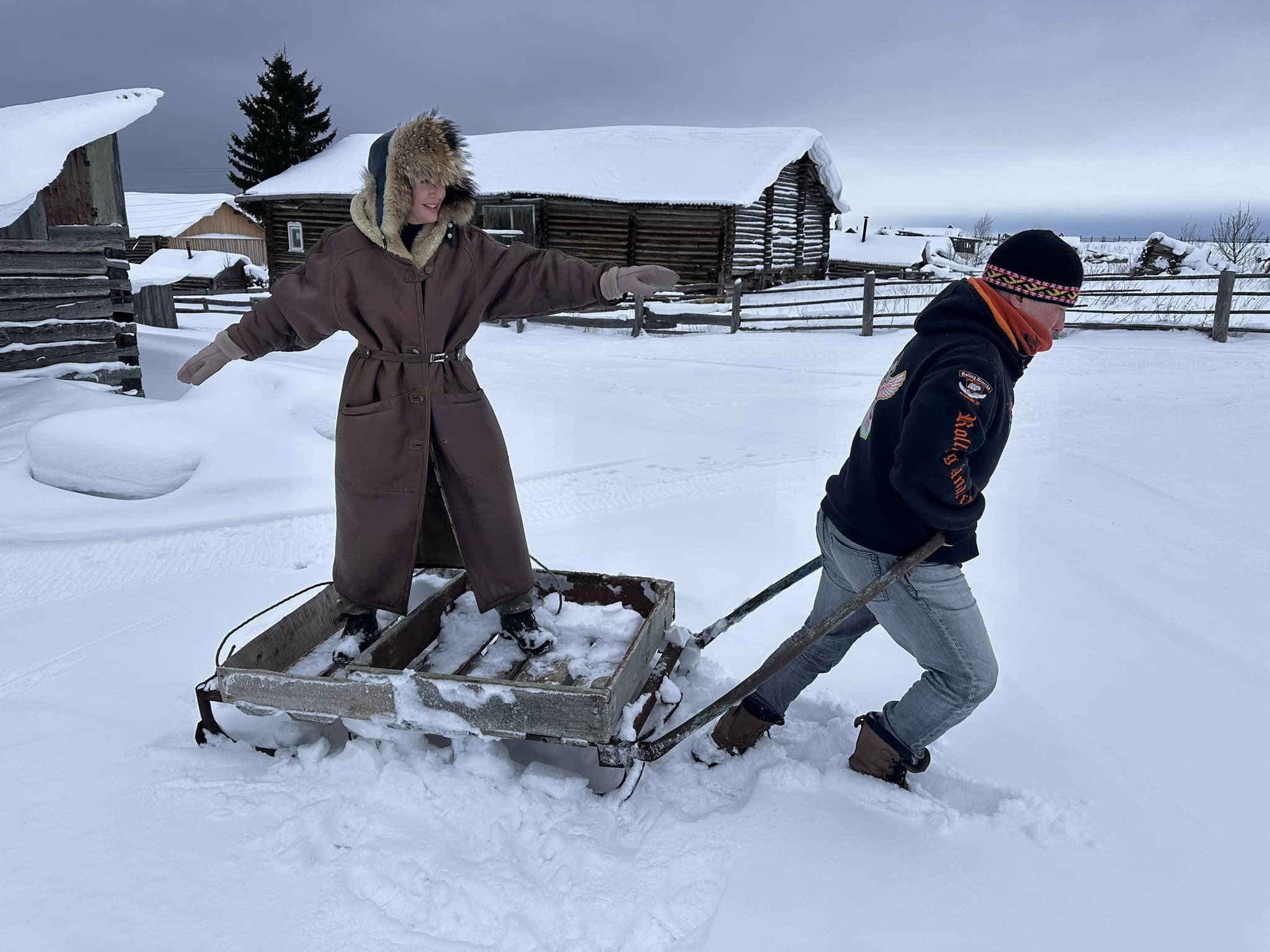
 Cap-travel.ru
Cap-travel.ru